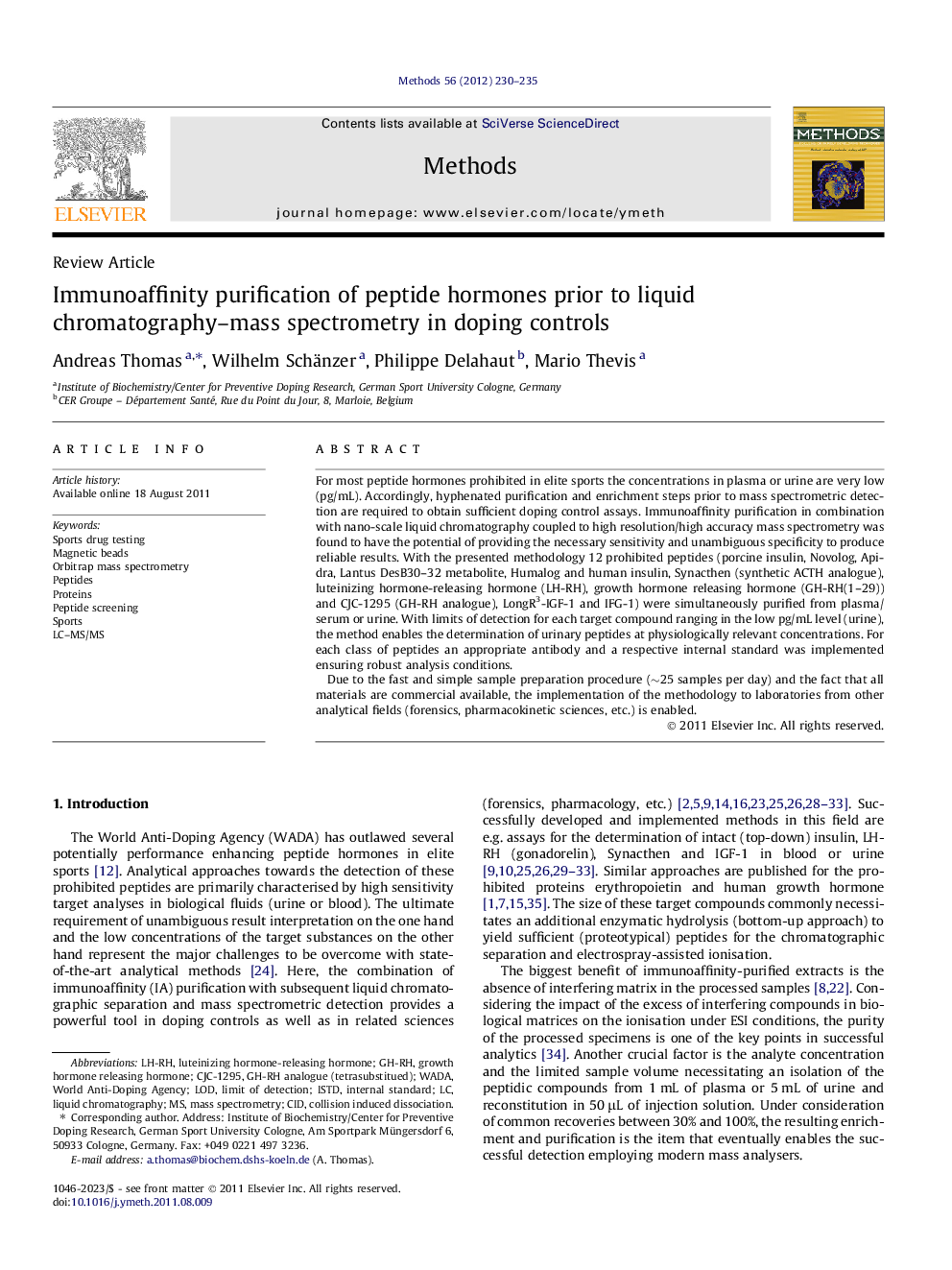| Article ID | Journal | Published Year | Pages | File Type |
|---|---|---|---|---|
| 1993519 | Methods | 2012 | 6 Pages |
For most peptide hormones prohibited in elite sports the concentrations in plasma or urine are very low (pg/mL). Accordingly, hyphenated purification and enrichment steps prior to mass spectrometric detection are required to obtain sufficient doping control assays. Immunoaffinity purification in combination with nano-scale liquid chromatography coupled to high resolution/high accuracy mass spectrometry was found to have the potential of providing the necessary sensitivity and unambiguous specificity to produce reliable results. With the presented methodology 12 prohibited peptides (porcine insulin, Novolog, Apidra, Lantus DesB30–32 metabolite, Humalog and human insulin, Synacthen (synthetic ACTH analogue), luteinizing hormone-releasing hormone (LH-RH), growth hormone releasing hormone (GH-RH(1–29)) and CJC-1295 (GH-RH analogue), LongR3-IGF-1 and IFG-1) were simultaneously purified from plasma/serum or urine. With limits of detection for each target compound ranging in the low pg/mL level (urine), the method enables the determination of urinary peptides at physiologically relevant concentrations. For each class of peptides an appropriate antibody and a respective internal standard was implemented ensuring robust analysis conditions.Due to the fast and simple sample preparation procedure (∼25 samples per day) and the fact that all materials are commercial available, the implementation of the methodology to laboratories from other analytical fields (forensics, pharmacokinetic sciences, etc.) is enabled.
Graphical abstractFigure optionsDownload full-size imageDownload as PowerPoint slideHighlights► 12 Prohibited peptide drugs were determined. ► Detection by mass spectrometry after immuno-purification. ► Highly accurate and sensitive.
